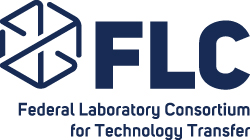03.06.17

908 Devices, a pioneer of analytical devices for chemical and biomolecule analysis, today announced that its efforts to develop, build and launch commercial products based on technology licensed from Oak Ridge National Laboratory (ORNL) have been honored by the Federal Laboratory Consortium for Technology Transfer as an Excellence in Technology Transfer award winner. Beginning with a signed Option agreement for ORNL’s miniature ion trap mass analyzer in January 2012, 908 Devices formed, signed an exclusive field-of-use license, secured funding and began the commercialization process in just six months. This enabled the Company to successfully bring to market, less than two years after license execution in June 2012, a revolutionary new approach to mass spectrometry (MS) – the gold standard of chemical analysis.
Leveraging ORNL’s technology, 908 Devices is successfully transforming large, complicated MS instruments into small and simple tools through the development of its patented and award-winning high-pressure mass spectrometry (HPMS™). This technology enables MS, traditionally characterized by bulky and complex lab-bound instruments, to be smaller, simpler and more affordable, expanding accessibility and streamlining analysis within a variety of industries.
“908 Devices was founded with the goal of making mass spec analysis a tool that is accessible to everyone,” said Dr. Kevin Knopp, CEO and Co-Founder, 908 Devices. “We have built upon ORNL’s technology foundation to launch a new class of products that harness MS power while being radically simpler in form and removing user burdens.”
To date, 908 Devices has brought to market three purpose-built devices that have significantly improved and simplified analytical capabilities for the safety and security, applied markets, and life sciences industries. The products range from rugged, handheld chemical detection tools to compact, tiny footprint analyzers and fast separation devices:
- M908™ – As the world’s first and only handheld tool utilizing HPMS, this rugged and portable chemical threat detector provides civilian, federal and military first responders with expanded analysis capabilities directly at the point-of-need. The device is currently being used by CBRNE and HAZMAT organizations around the world, including the Massachusetts Hazardous Materials Emergency Response Division, the US Department of Defense and the New York City Fire Department.
- G908™ – A compact, 28-pound analyzer for applied markets that combines the compound-separating capability of ballistic gas chromatography (GC) with the mass-based detection of HPMS for fast compositional analysis at unparalleled levels of selectivity and sensitivity. 908 Devices has been partnering with industry leaders Schlumberger and Saudi Aramco since 2013 and 2015, respectively, to launch HPMS technology solutions for applications throughout the oil and gas industry.
- ZipChip™ – A game-changing, front-end platform that uses integrated microfluidic technology to prepare, separate and electrospray biological samples directly into MS instruments, significantly improving and expanding their analytical capabilities. The platform has been recognized with multiple industry awards and received praise from top industry players. Most recently, Thermo Fisher Scientific signed a two-year, co-exclusive agreement with 908 Devices to sell the ZipChip platform as a complementary component to its High Resolution Accurate Mass (HRAM) MS instruments.
“Researchers have been trying to transform mass spec instruments into more user-friendly devices for decades, and based on the miniature ion trap mass analyzer we developed at ORNL, we saw the potential to finally achieve that goal,” said Dr. J Michael Ramsey, Scientific Founder, 908 Devices. “While the advancements at ORNL were crucial, it’s the shared vision of 908 Devices’ founding members that made this evolution possible. Through that collaboration and dedication, we’ve overcome many of the limitations associated with mass spec, considerably expanded its capabilities and found a way to turn research into technology that is making a lasting societal impact.”
About the Federal Laboratory Consortium for Technology Transfer (FLC)
Organized in 1974 and formally chartered by the Federal Technology Transfer Act of 1986, the FLC is a nationwide network of approximately 300 federal laboratories, centers, parent departments, and agencies that establishes strategies and opportunities for linking laboratory mission technologies and expertise with the marketplace. To accomplish its mission of assisting the movement of innovative federal research and development into the U.S. economy, the FLC provides various resources from training to regional and national meetings so its members can obtain the resources they need to achieve successful technology transfer. To learn more about the FLC and its mission, visit www.federallabs.org.





